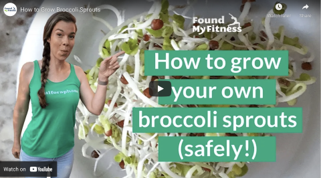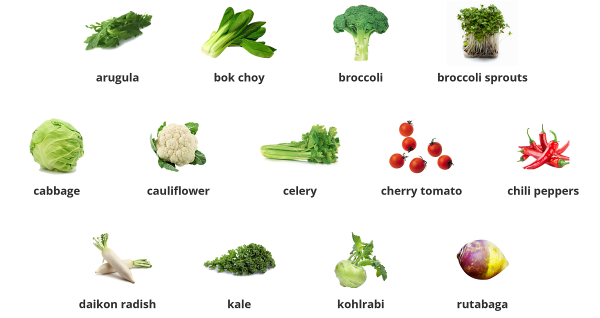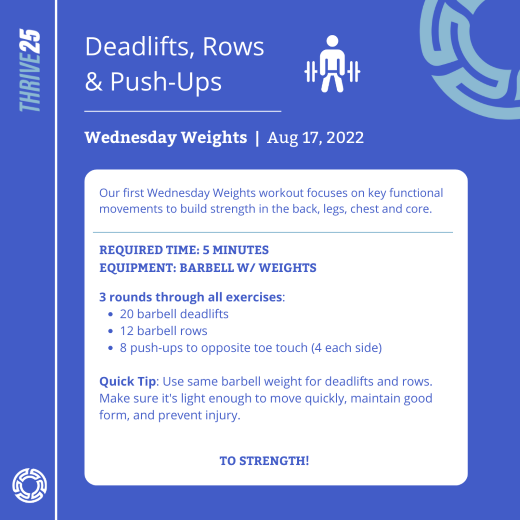Issue #3: Romaine Calm
Good morning. It's Wednesday, Aug 17th. On this day 14 years ago (2008) Michael Phelps became the first athlete to win 8 gold medals in a single Olympics in Beijing.
“It is easier to change a man’s religion than to change his diet.”
Check out our first Wednesday Weights Workout and Thrive25 Brain Puzzle!
The number of growing acres in the U.S. - 317M acres for the Top 15 commodities (e.g., wheat, corn, soy, etc.), compared to only 2M acres for nutrient-dense vegetables.
What we Grow & Eat Today
The acronym SAD (Standard American Diet) is kind of annoying, but pretty true.
On average, 90% of our calories today come from just 15 crops - mostly from wheat (flour), corn (high-fructose corn syrup and food additives), and soy (soybean oil). Compare this to the 800+ plant varieties our hunter-gatherer ancestors ate.
Think it's because healthy veggies are only 0.72% of our harvested acres??
But ummm - hunter-gatherers didn’t live as long as we do now, so what’s the big deal?
True, modern medicine has done wonders to extend our lifespan, but as we saw in Issue #1, that doesn’t mean we are healthy during all those extra years. Our bodies are still programmed to eat how we as humans have for millions of years (hence why some follow The Paleo Diet).
The minimum recommended nutrition is 3 servings veggies/day (remember a serving is a little more than a handful).
**Take a minute and think about what you ate yesterday or even since the weekend - any veggies in the mix??
And no, unlike the U.S. gov’t we aren’t counting ketchup (as tomatoes).
Veggie Intimidation
So you made it to Whole Foods - managed to find a parking spot, skirt pass the judgmental looks for forgetting your reusable bags, and finally made it inside.
You enter into a the beautiful produce display - the colors are so vibrant and you can almost feel healthier just being here. But then, how many times do you walk past the wall of veggies without putting more than same 1-2 you buy every week in the cart?
Let's be honest - it's hard to eat a bunch of veggies!
We've got to like 'em to eat them often (or at least be willing to try something new)
It has to fit into our busy schedule (the meal prep, cooking, clean up)
Fresh food has a tendency to go bad - and we HATE throwing away food!
Today we're going to cover #1 - picking out veggies you like or at least trying ones that are so good for our health that we really shouldn't avoid them.
Trying Something New
While it might seem like we always eat the same stuff, many of us do expand our food options - sometimes without even realizing it. Think back if you were eating brussels sprouts 10 yrs ago - most of us definitely weren't.
Heck, I remember being weirded out by guys putting avocados on their salads back in college. Now I eat avocados almost every day and brussels sprouts are a staple menu item not just in our house, but at restaurants all over the country (albeit often dressed up with bacon, maple syrup, or some other sweet treat).
The next Brussels Sprouts?
Broccoli is proving to be an absolute nutrient powerhouse. Stay with us on this one - we’ll give you a way to make it pretty tasty.
Broccoli is full of sulforaphane. What does that mean?
Well, it boosts glutathione (the absolute top antioxidant) and helps fight off cancer. In fact, broccoli is associated with reduced risk of prostate cancer (59%) and melanoma (28%).
You know what's random - the stem of the broccoli actually has 2x the amount of sulforaphane. So don't just eat the top and throw out the rest!
Ways to make broccoli taste great:
Buy it right - bright green, no wimpy stalks, and no yellow flowers
Cook it right:
Complement it right:
Douse it with grass-fed butter or dip it in tzatziki sauce (love this one)
Add parmesan cheese and/or almond slivers
Blend it right:
Mix the stem in a vitamix and throw in a sauce or soup
Put it in a smoothie with lots of stuff to hide the taste
Really not a fan…here’s a list of other veggies with sulforaphane.
Feeling really ambitious? The highest concentration of sulforaphane is actually in broccoli sprouts - which has 10-100x more than full grown broccoli. (See - literally the next "brussels sprouts").
Dr. Rhonda Patrick (a leading longevity expert) has a full step-by-step process to growing your own broccoli sprouts. For mere mortals - you can also just buy 'em at your local store/farmers market.
Bonus Tip: Love those Tubers
Potatoes are one of the most popular vegetables - mostly as fries and chips.
Let’s be honest, fries are delicious.
But we probably shouldn’t eat them all the time. Seriously, not good!
But the right kinds of potatoes can be great options.
Option #1: sweet potatoes. Don’t spike blood glucose/insulin, contain a ton of nutrients, and taste great.
Option #2: purple potatoes. These are actually amazing - a study showed decreased inflammation and DNA damage in healthy males, and also proof these potatoes suppress colon cancer.
And look, if you’re currently healthy and not trying to lose weight, a non-fried white potato once in awhile isn’t going to be a problem.
**Want more info and some recipe ideas - check out this detailed summary for all things potatoes.
Just Pick 5
Ok - so let's take the Tiny Habits approach and just go for a few to start.
**Pick out 5+ veggies (images included below to help think about some popular or new options). Can be either veggies you already eat today or what you’re willing to give a go.
Dark Leafy Greens
Cruciferous Veggies
Colorful Veggies
**Keep this list handy - we’ll be talking more about how to incorporate these veggies into your weekly shopping list.
Also, you'll be getting awesome recipes every Tuesday & Thursday to help use this list and maybe add a few more.
Speed Read
Health & Longevity in the News
Q&A with David Sinclair: The Lifespan author spent 20 minutes going over questions on longevity - like can you optimize longevity and crush long distance races or can you maintain muscle when you take metformin?
Nap Like a Navy SEAL: Jocko Willink's regimen of an 8 min power nap has claims to make you feel like a super hero. You can't substitute a good night sleep, but does it really work? Find out for yourself.
Animals that Don’t Age: Scientists have revealed that wild turtles age slowly, live long lives, and have also uncovered several species that practically do not age at all.
Wednesday Weights
The Wednesday workout is going to be more focused on strength - but it'll still get your heart pumping.
Check out this whole body workout that just might make you sore in just 5 minutes!
Workout courtesy of Connor J. Obrochta. Check out all of his workouts at Playbook!
Key Call Outs:
Brain Games
Our weekly logic puzzle/game to keep the mind sharp and to strengthen our mental acuity for years to come.
Can you solve the code where each letter correlates with a unique number to solve the following equation? (Yes - we wish the answer was "twenty-five")
SEVEN + SEVEN + SIX = TWENTY
Credit: Brainden
**For answer, scroll down
Thanks for helping us build Thrive 25 - have an awesome day!
Check out the latest workout videos on our YouTube channel
Got feedback? Tell us what you think at team@thrive25.com
Want this direct to your inbox? Sign up here
Brain Teaser Answer: 68,782 + 68,782 + 650 = 138,214
Why Thrive25
We’re 40-something dads that felt our bodies and minds start to slow down and we’re not ready for that. We found too much information on every subject. So we started Thrive25 to transform what we’ve learned into something useful for the rest of us to spend just 3-5 min a day to optimize our health & longevity.
This newsletter is for you and we truly value your feedback. Never hesitate to reach out to us at team@thrive25.com.
To health!
Sign up for free:
The information in this newsletter is for informational purposes only and may not be appropriate or applicable based on your individual circumstances. Thrive25, Inc. does not provide medical, professional, or licensed advice. Please connect with your healthcare professional for medical advice specific to your health needs.












